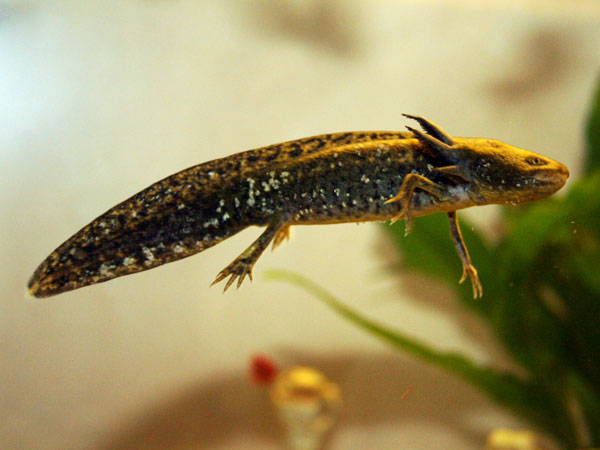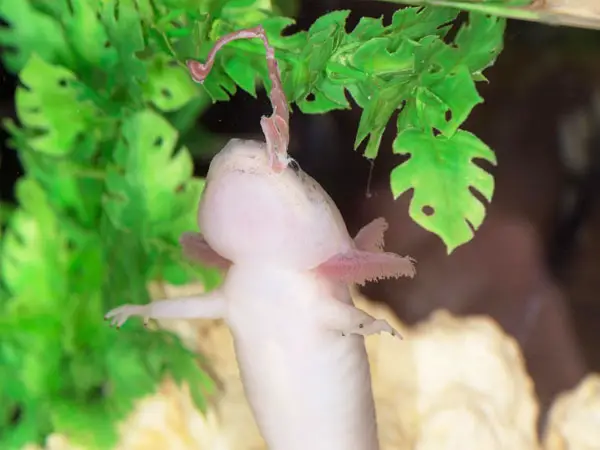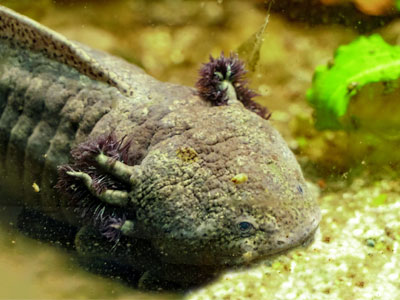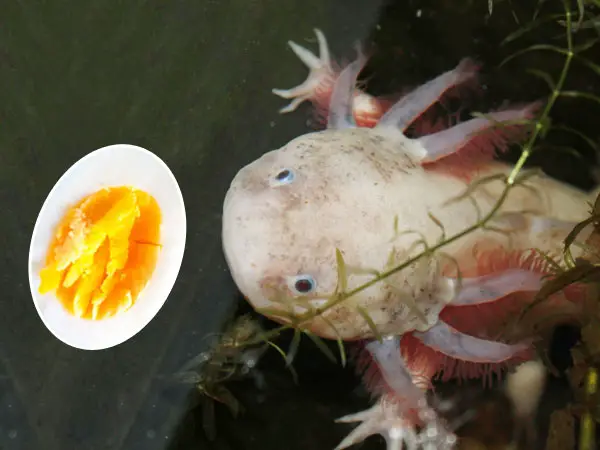You might have noticed that your axolotl is floating, but you might be wondering, why is it doing that? You will see that when you see an axolotl float, it is not the reason to panic. You can usually see right away if there is genuine reason for concern, or if it just a normal behavior.

In general, axolotls will not like to float around. In some cases, it might happen naturally, while in other cases, it’s something underneath that is causing the problem. The animal will prefer to have its feet on the ground, and you’ll rarely see it float around naturally. If the axolotl floats and it’s not able to return to the ground even when you try to scare it, then it might be a reason for concern.
Normally, there are some fixable problems that are connected to this issue. The most common problems or reasons that cause the axolotl to float are:
- They swallow air while feeding, causing them to float.
- The floating might happen due to impaction.
- There might be an ammonia spike.
- Gas buildup in axolotl gut.
- Sinking pellets can cause floating.
Let’s take a look at why axolotls float.
They Swallow Air Bubbles While Feeding
Yes, this is one of the reasons that shouldn’t cause you to panic if you see the axolotl float. You can usually tell if they are flowing due to this as they will not be turned upside down and will also return to the ground if you try to scare them.
Axolotls seem to love air bubbles, and it can do wonders for their gills. However, this behavior is very common and will be observed quite often. If you see your axolotl floating, try to scare it or push it gently towards the ground to see if it responds. If not, it might be another issue.
Impaction
Impaction is one of the most common reasons for problems with axolotls. They will ingest just about anything that they can put into their mouth, including the substrate. And if you have gravel as your substrate, the axolotls might suffer from impaction.
This happens when the axolotl ingests something that they can’t get out of their system, and they might become bloated. Make sure you have substrate that is larger than their heads, such as rocks, or opt for other types of substrate that can’t cause impaction (sand, empty bottom, or other similar substrate types should be considered.)
Ammonia Spike
When you have ammonia in your tank, you will usually not be able to tell straight away. When you see your axolotl float, you will want to take quick measures of the water parameters, including the ammonia levels.
The best way to test the ammonia levels is with a test kit. If you find out that ammonia levels are out of control, you will want to take measures immediately. These include changing the water in the tank, providing a more powerful filtration system with effective chemical and biological filters, and placing the axolotl in a tank where the water parameters are fine for a while.
Note that some test kits will be inaccurate for measurements, so you’ll need to repeat the measurements a couple of times.
Gas Buildup in Axolotl Gut
Axolotls can suffer from gas buildup in their gut if the water parameters or the water quality is poor. They will appear somewhat bloated, and sudden temperature changes are the primary reason for gas buildup in their gut. Treating this issue can be complicated, and you’ll have to put the axolotl in a safe environment for a while until you fix the water parameters of the primary tank.
Sinking Pellets can Cause them to Float
One of the most common reasons for floating is because axolotls bloat, and that can happen due to sinking pellets. It’s because the pellets will usually expand once you put them into the tank, and the axolotl might eat too much, causing them to become bloated.
So, it is definitely recommended to soak the pellets slightly before you put them into the tank to prevent this problem from happening.
Is Floating Bad for Axolotls?
Floating is not a behavior that we would usually see in axolotls. Sure, it can happen in rare cases where it swallows air bubbles from the water. But, mostly, axolotls won’t like to float around the aquarium, and it might cause a great deal of stress.
To prevent further diseases, you should treat the problem that caused the floating in the first place. So floating is not a good thing for axolotls, especially if it happens for prolonged periods.
How to Treat Floating Axolotls?
- Don’t feed them a few days. You shouldn’t try to force any food for a few days until they remove the bloat from their stomachs, and everything returns to normal. It might take a few days for that to happen, though.
- Test for ammonia and eliminate this problem. As we already noted, ammonia can be a reason for axolotls floating, especially ammonia spikes. Make sure that the ammonia levels in the water are in check. If not, take measures to eliminate it.
- Reduce water temperatures. Floating can also happen to temperatures, so keep them down for a while.
- Put your axolotls in a shallow tub with air stone.
- Consult a vet that specializes in reptiles and amphibians.
How to Prevent Axolotls from Floating?
Like with many things, prevention is key when it comes to floating. You can do some things to prevent floating, which include:
- Keeping good water quality and the parameters in check.
- Feeding axolotls regularly and not too much or too little – just right.
Conclusion
If you see your axolotl floating for prolonged periods, you will want to take immediate action. If the issue is beyond the scope of your knowledge, then you should consider contacting a professional that deals with amphibians, or your vet. In some cases, floating cannot be solved by you alone.




